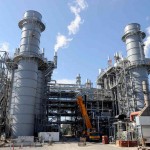Natural gas extended gains as forecasts for cold weather across the northern and eastern US fanned expectations for strong heating demand and as investors expected EIAs inventory report later today to show a withdrawal largely near the average.
Natural gas for delivery in March traded 2.68% higher at $2.872 per million British thermal units at 9:53 GMT, having earlier touched a two-week high of $2.882. The contract rose 4.48% yesterday to $2.797 and is up 10.9% for the week so far.
According to NatGasWeather.com, natural gas demand in the US will be high compared to normal through February 18th, with mild conditions set to dominate the West over the next seven days, while the central US turns cooler and the East remains cold.
Colder-than-usual readings over the eastern and northern US continue to spur significantly stronger heating demand, especially as overnight lows across the Great Lakes and Northeast drop into the single digits and below zero. An even stronger cold blast with heavier snowfall is anticipated to follow on Saturday, extending below-freezing temperatures deep into the Southeast and spurring locally high heating demand. The West will continue to enjoy dry and warm conditions this weekend that will spread into the central US, with temperatures across Texas and California set to peak in the 70s and 80s.
Early next week, a weather system will bring showers across Texas and the southern Plains before a cold blast hits the northern US on Tuesday and Wednesday and pushes into the central US, including Texas.
Weather systems will continue to bring showers and colder-than-usual readings to the Midwest into the East in the course of the week, while the central US experiences a few cold blasts. The most threatening truly cold air, however, will remain confined to the Great Lakes and Northeast, while the West remains near or warmer than usual.
Temperatures
According to AccuWeather.com, readings in New York on February 13th will range between 12 and 18 degrees Fahrenheit, compared to the average of 29-41, and will bottom at 4 degrees two days later. A return to seasonal and slightly lower readings is expected after February 21st. Chicago will see temperatures bottom at -1 degrees on February 14th, 22 below usual, with highs not expected to go above the freezing point before February 26th.
Down South, Houston will enjoy seasonal readings today at 42-65 degrees and, apart from a few brief periods, highs will hover close to the average 66-68 through the end of the month. On the West Coast, Los Angeles will see temperatures peak at 86-89 degrees through February 14th, compared to the average of 68, before easing to seasonal and slightly higher levels through the rest of February.
EIA report
The Energy Information Administration will likely report a withdrawal of around 165-175 bcf later today, near the five-year average of 178 billion cubic feet, as last week’s cold blasts over the North and East are factored in. Inventories declined by 234 bcf during the comparable week a year earlier. A drop below 165 bcf would be seen as bearish, and below 160 bcf – extremely bearish.
However, last weekend and this week’s warm-up over the central, southern and western US will lead to a much thinner withdrawal for the following report due at February 19th. Supplies through the third week of February are expected to turn deficits to the five-year average into surpluses. However, the persisting cold conditions over the North and their spreading into into the Southeast and central US will prevent surpluses from expanding and will keep supplies near the average through the end of the month. Bullish sentiment will persist especially if cold winter blasts continue to spur high heating demand into the beginning of March.
The government agency said last Thursday that US natural gas inventories fell by 115 billion cubic feet in the seven days through January 30th. Total gas held in US storage hubs amounted to 2.428 trillion cubic feet, narrowing the deficit to the five-year average stockpiles of 2.457 trillion to 1.2%, or 29 bcf, from 3.0% a week earlier. The surplus to the year-ago storage of 1.960 trillion cubic feet expanded to 23.9% from 14.6% during the preceding period.
Pivot points
According to Binary Tribune’s daily analysis, March natural gas futures’ central pivot point stands at $2.780. In case the contract penetrates the first resistance level at $2.874 per million British thermal units, it will encounter next resistance at $2.952. If breached, upside movement may attempt to advance to $3.046 per mBtu.
If the energy source drops below its first support level at $2.702 per mBtu, it will next see support at $2.608. If the second key support zone is breached, the power-station fuel’s downward movement may extend to $2.530 per mBtu.
In weekly terms, the central pivot point is at $2.643. The three key resistance levels are as follows: R1 – $2.719, R2 – $2.859, R3 – $2.935. The three key support levels are: S1 – $2.503, S2 – $2.427, S3 – $2.287.





